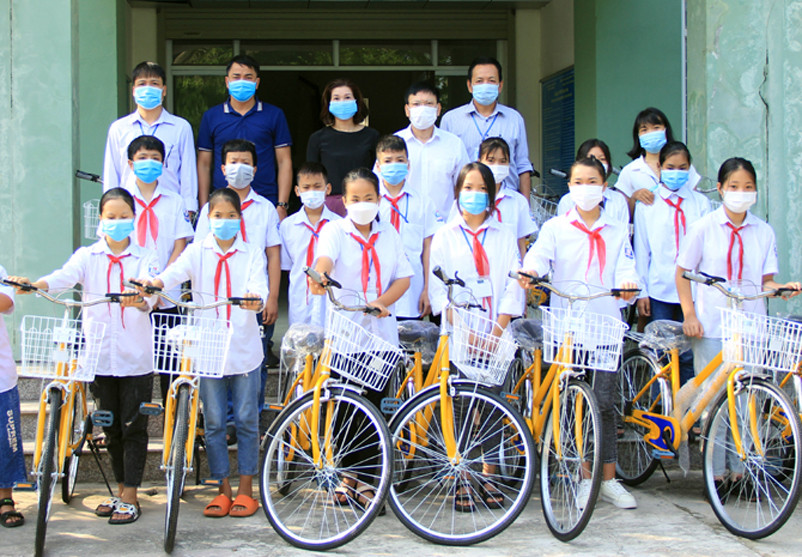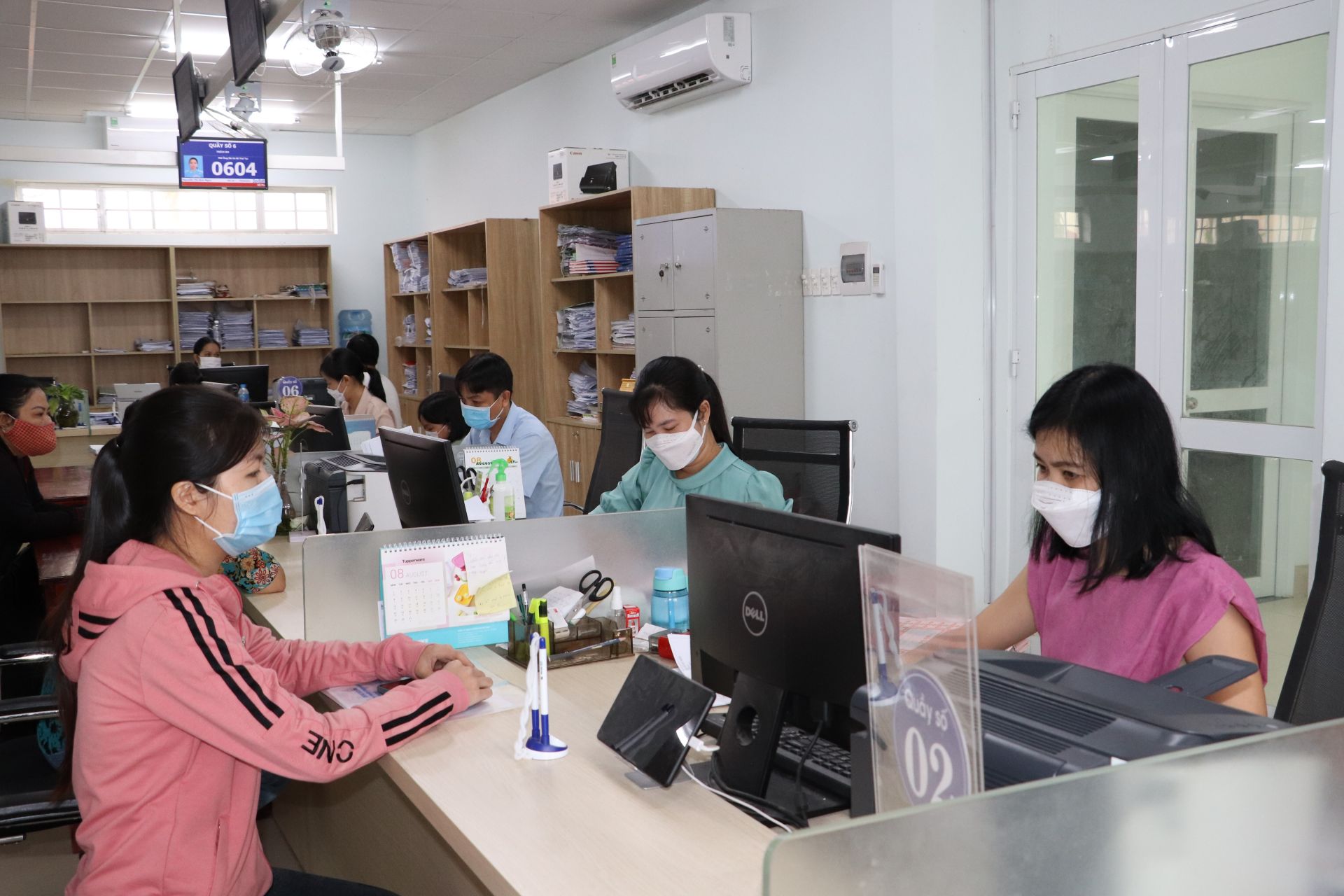Groups of disadvantaged children under the law in Vietnam
What are the groups of disadvantaged children under the law in Vietnam? Thien Nhi (Dong Thap)

Groups of disadvantaged children under the law in Vietnam (Internet image)
Regarding this issue, LawNet would like to answer as follows:
1. Groups of disadvantaged children under the law in Vietnam
Groups of disadvantaged children according to Section 1 of Chapter II of Decree 56/2017/ND-CP are as follows:
* Orphans
- Orphans who have no caregiver.
- Orphans who are nurtured by child protection service providers or social relief establishments.
- Orphans who live with their relatives.
- Orphans who receive alternative care from individuals or families other than their relatives, unless they are adopted.
* Abandoned children
- Abandoned children who have no alternative care.
- Abandoned children who have alternative care.
* Children who have no one to rely on
- Children who have one parent die and the other declared as missing as prescribed by law.
- Children who have one parent die and the other taken care of by a social relief establishment or no longer capable of caring for and nurturing his/her children.
- Children who have one parent die and the other currently serving an imprisonment sentence or confined to a compulsory educational institution or compulsory rehabilitation establishment.
- Children who have both parents declared as missing as prescribed by law.
- Children who have one parent declared as missing as prescribed by law and the other taken care of at a social relief establishment.
- Children who have one parent declared as missing as prescribed by law and the other serving an imprisonment sentence or confined to a compulsory educational institution or compulsory rehabilitation establishment.
- Children who have both parents no longer capable of taking care of them.
- Children who have both parents taken care of by a social relief establishment.
- Children who have both parents serving an imprisonment sentence or confined to a compulsory educational institution or compulsory rehabilitation establishment.
- Children who have one parent taken care of by a social relief establishment and the other serving an imprisonment sentence or confined to a compulsory educational institution or compulsory rehabilitation establishment.
- Children who have both parents in child age.
- Children who have both parents restricted from exercising the parents’ rights or who are temporarily separated from their parents as prescribed by law.
* Children with disabilities
- Children with extremely serious disabilities.
- Children with serious disabilities.
- Children with mild disabilities.
* HIV/AIDS-infected children
HIV/AIDS-infected children as prescribed by law.
* Juvenile delinquents
- Juvenile delinquents who are serving the administrative measure of education at a commune, ward or township or of confinement to a reformatory; or who are placed under family-based management in replacement of an administrative sanction.
- Juvenile delinquents whose stable places of residence are not yet identifiable and who are serving the administrative measure of education at a commune, ward or township or of confinement to a child protection service provider or social relief establishment.
- Juvenile delinquents who are serving the judicial measure of education at a commune, ward or township or of confinement to a reformatory; or who are serving non-custody reform, a term imprisonment, or a suspended term imprisonment.
- Children who have completely served a term imprisonment or completely served the measure of confinement to a reformatory.
* Narcotic-addicted children
- Narcotic-addicted children in rehabilitation establishments.
- Narcotic-addicted children who receive family- or community-based addiction rehabilitation or treatment.
* Children who have dropped out of school for livelihood and have not yet finished lower secondary education
- Children who have dropped out of school for livelihood and have not yet finished lower secondary education and have no caregiver.
- Children who have dropped out of school for livelihood and have not yet finished lower secondary education and are living together with their parent(s) or caregiver.
* Children suffering serious physical and mental harms due to violence
Children who, due to violence, suffer mental or behavioral disorders or have limited ability to communicate and learn or to meet their daily-life personal needs according to the assessment of the level of harm caused to these children made by an assessment body or a health establishment or a professional at the request of a competent agency, organization or person.
* Exploited children
- Children who are forced to work in contravention of the labor law.
- Children who are enticed, incited, provoked, taken advantage of, dragged, seduced or forced to participate in performance activities or who are employed in producing pornographic products.
- Children who are enticed, incited, provoked, taken advantage of, dragged, seduced or forced to participate in tourist activities and are sexually abused; or who are given, received or supplied for prostitution activities.
- Children who are enticed, incited, provoked, taken advantage of, dragged, seduced or forced to participate in transporting, trading, manufacturing or storing habit-forming substances and other prohibited commodities as prescribed by law.
- Children who are enticed, incited, provoked, taken advantage of, dragged, seduced or forced to participate in other self-seeking activities.
* Sexually abused children
- Raped children.
- Child victims of coercive sexual intercourse.
- Child victims of sexual intercourse.
- Child victims of sexual contact.
- Children employed for prostitution or pornographic purposes in any form.
* Trafficked children
- Trafficked children who are repatriated to live with their parents.
- Trafficked children who are repatriated and receive alternative care.
* Children of poor households or households living just above the poverty line who suffer a dangerous disease or a disease requiring long-term treatment
- Children of poor households who suffer a dangerous disease or a disease requiring long-term treatment as prescribed by competent agencies.
- Children of households living just above the poverty line who suffer a dangerous disease or a disease requiring long-term treatment as prescribed by competent agencies.
* Migrant, displaced and refugee children whose parents have not yet been identified or who are unaccompanied
- Vietnamese children who migrate or are displaced in the country whose parents have not yet been identified or who are unaccompanied.
- Foreign children who migrate, are displaced or seek refuge and are unaccompanied.
- Children whose citizenship has or parents have not yet been identified or who are unaccompanied and migrate, are displaced or seek refuge in Vietnam.
2. Private information of children under the law in Vietnam
According to Article 33 of Decree 56/2017/ND-CP, private information of a child is information on name, age and characteristics for personal identification; information on health status and privacy written in health records; personal images; information on family members and caregiver of the child; personal property; telephone number and mail address; address of and information on residence place and native place; address of and information on school, class, learning result and friends of the child; and information on services provided for the child.
- Key word:
- disadvantaged children
- in Vietnam
- Cases of land rent exemption and reduction under the latest regulations in Vietnam
- Economic infrastructure and social infrastructure system in Thu Duc City, Ho Chi Minh City
- Regulations on ordination with foreign elements in religious organizations in Vietnam
- Increase land compensation prices in Vietnam from January 1, 2026
- Determination of land compensation levels for damage during land requisition process in Vietnam
- Who is permitted to purchase social housing according to latest regulations in Vietnam?
-

- Emergency response and search and rescue organizations ...
- 10:29, 11/09/2024
-

- Handling of the acceptance results of ministerial ...
- 09:30, 11/09/2024
-

- Guidance on unexploded ordnance investigation ...
- 18:30, 09/09/2024
-

- Sources of the National database on construction ...
- 16:37, 09/09/2024
-

- General regulations on the implementation of administrative ...
- 11:30, 09/09/2024
-

- Notable new policies of Vietnam effective as of ...
- 16:26, 11/04/2025
-
.Medium.png)
- Notable documents of Vietnam in the previous week ...
- 16:21, 11/04/2025
-
.Medium.png)
- Notable documents of Vietnam in the previous week ...
- 16:11, 02/04/2025
-
.Medium.png)
- Notable new policies of Vietnam to be effective ...
- 16:04, 02/04/2025
-
.Medium.png)
- Notable new policies of Vietnam effective from ...
- 14:51, 21/03/2025

 Article table of contents
Article table of contents
